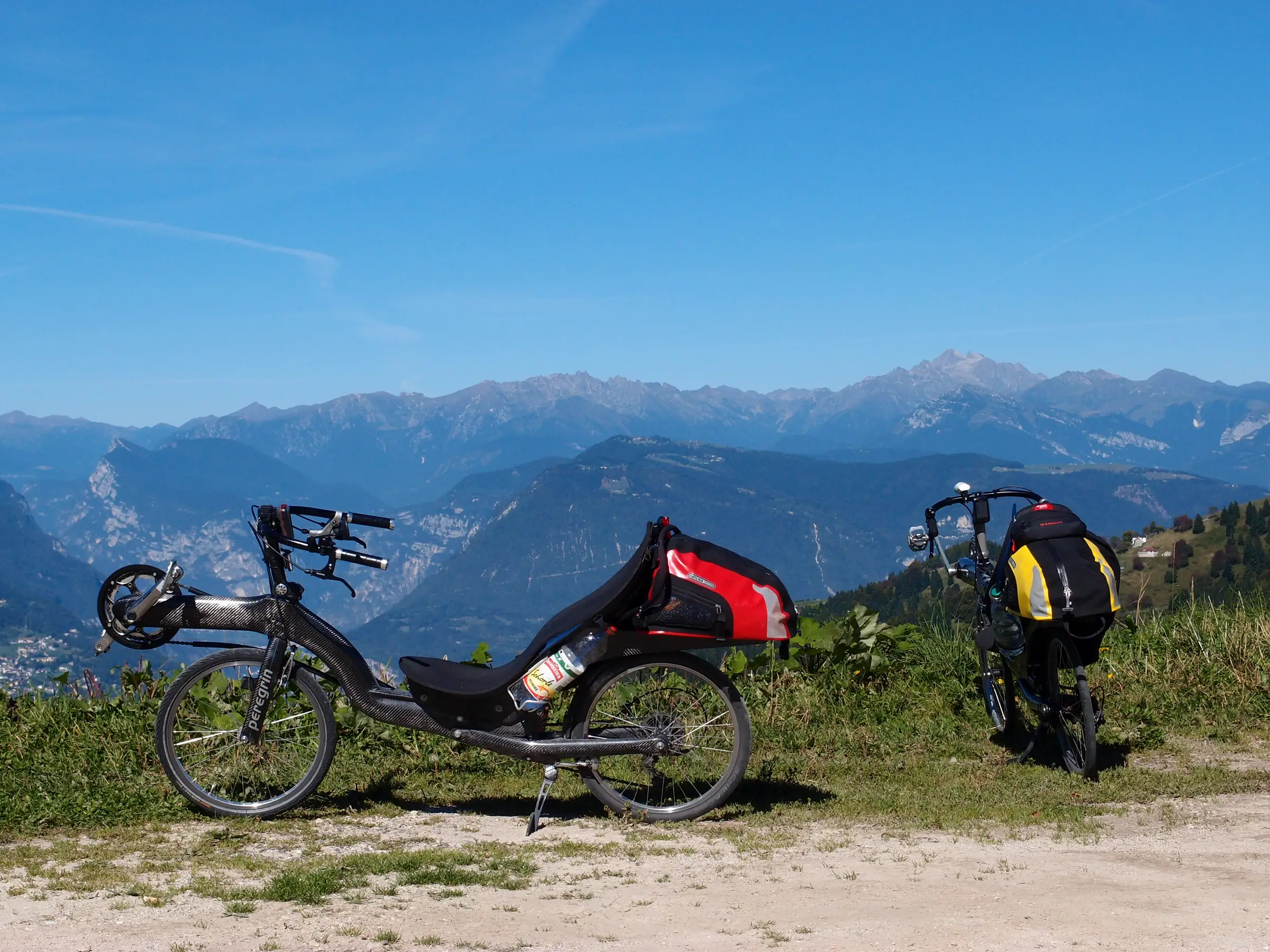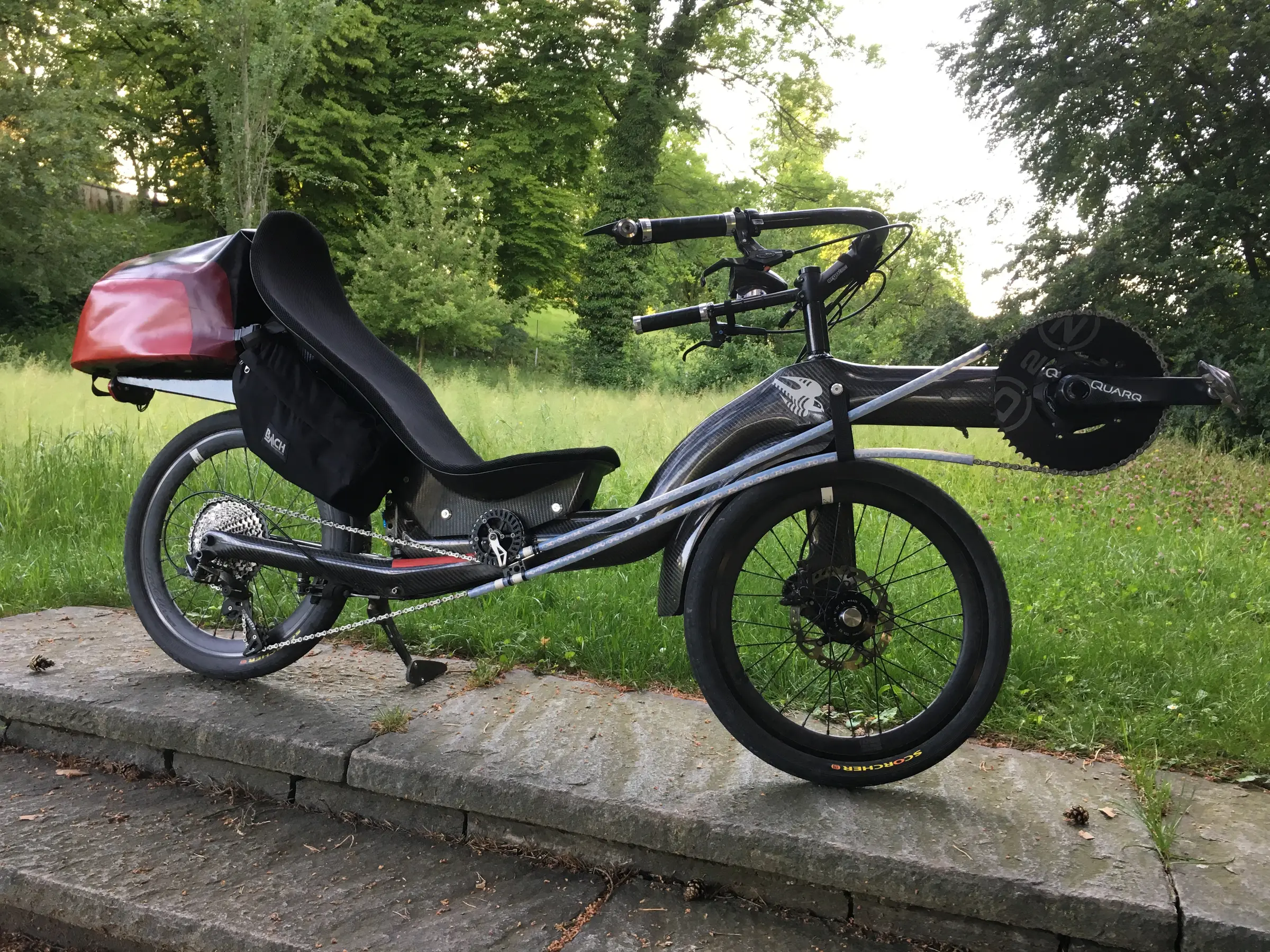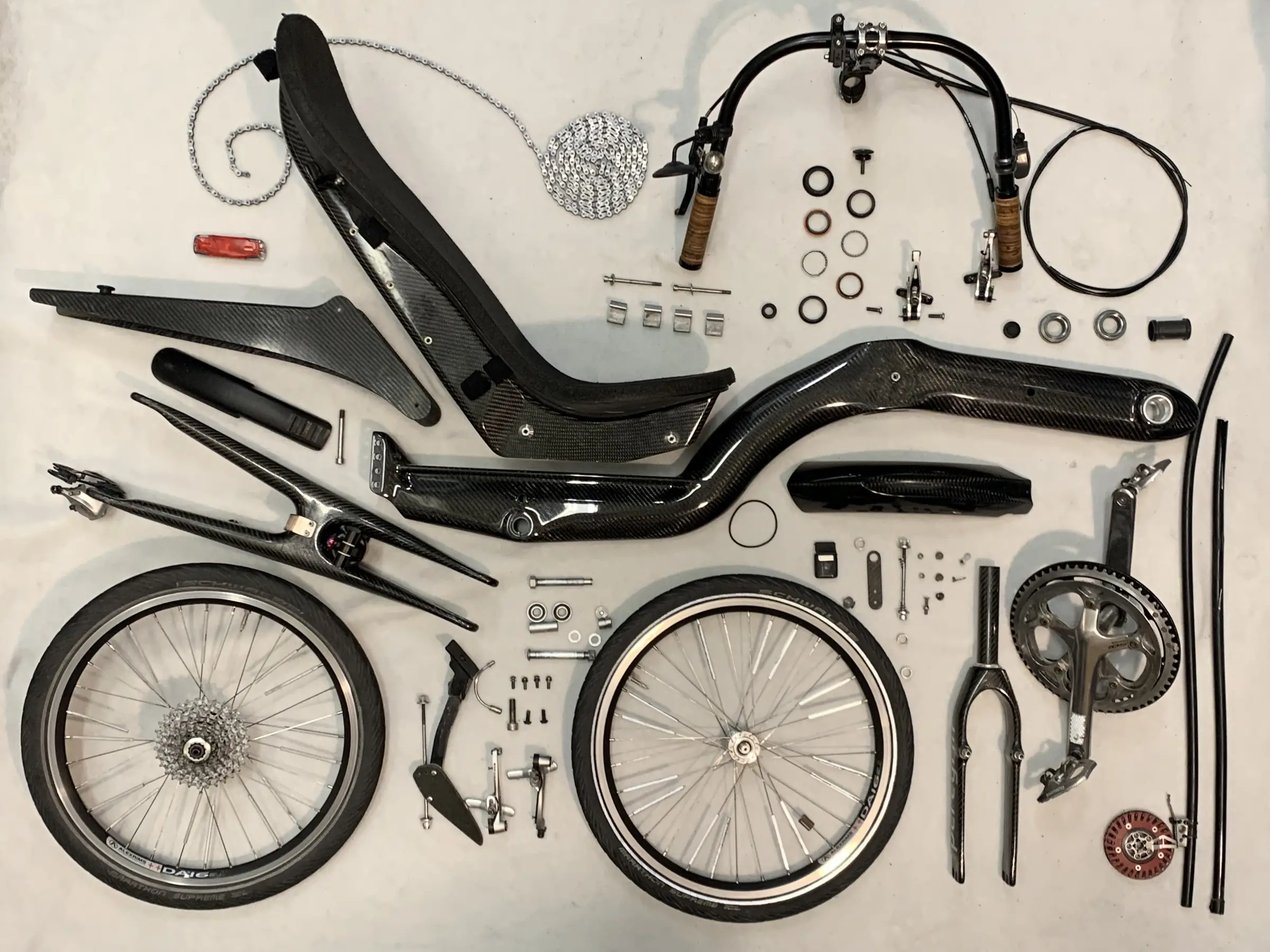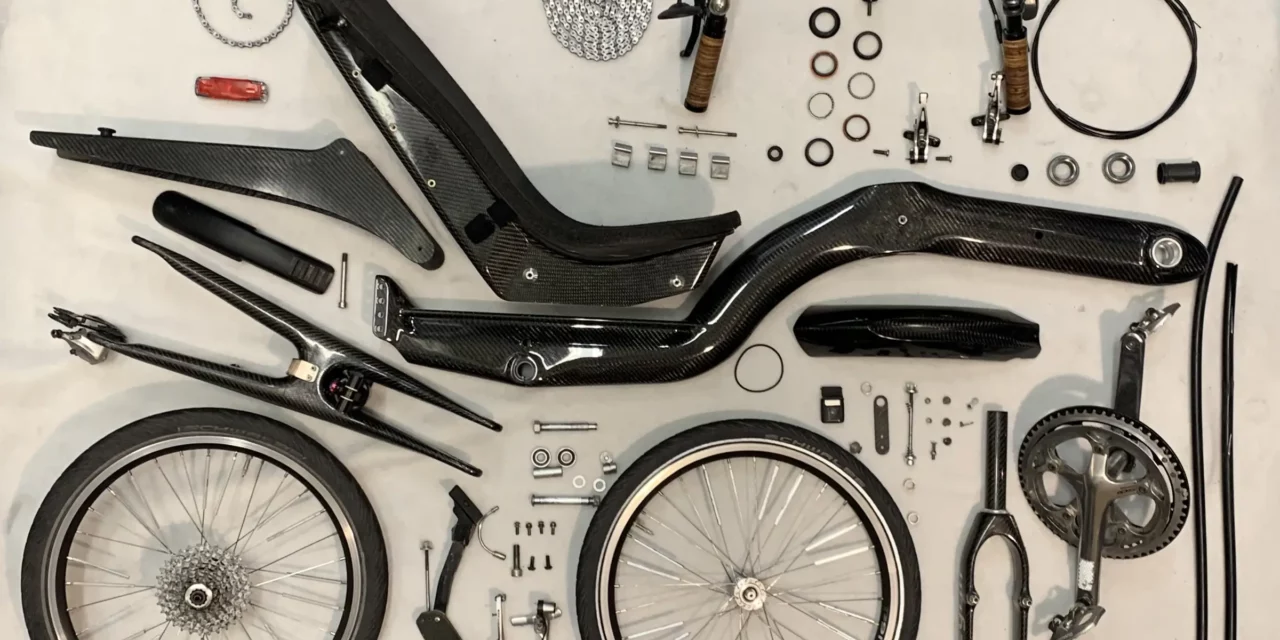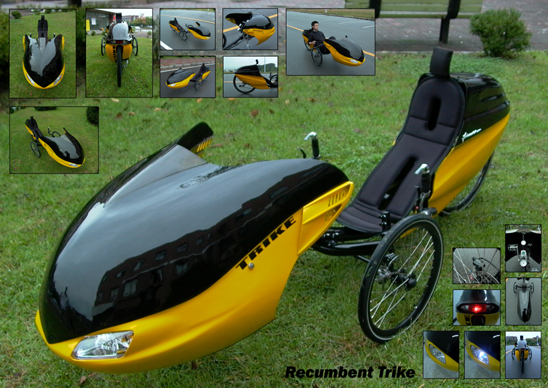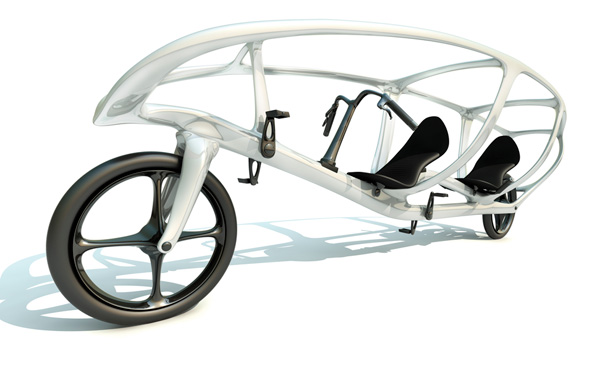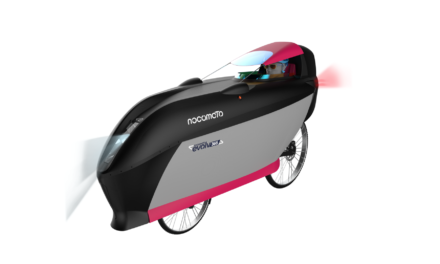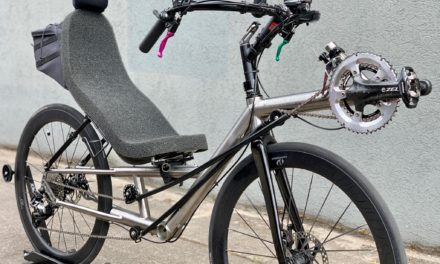In the world of recumbent bikes, some brands are little known or almost unknown, but they often have an excellent reputation, and their products are highly valued, admired, and often very expensive. European bike racing fans would definitely disagree with me on this one, as everyone in their community knows about the Birkenstock brand, but few outsides of them know about the Swiss bike manufacturer. Especially when it comes to trike riders.
Birkenstock manufactures carbon recumbent bicycles and velomobiles in Rapperswil, Switzerland, and he also sells velomobiles of other brands. Jürg Birkenstock’s work is characterized by extreme care and precision, which in turn is reflected in the stunning appearance of the machines he builds. However, not all of them are his design. Peregrin is one of them. This recumbent bike with two 20″ wheels and rear suspension was designed by Charles Henry, who stands behind the fantastic 441 velomobile I wrote about several months ago. Andi Gerber owns three Peregrins and had one refreshed after ten years of heavy use. Here is the story of his bike, including a short interview.
Text: Andi Gerber & Honza Galla
Pictures: Jürg Birkenstock, Charles Henry, Andi Gerber
The bike in the exploration picture is the sixth frame produced. The carbon parts shown were laminated back in 2006 and, after a slumber, were built up in 2011 according to the wishes of the current owner.
The Peregrin is an extremely flexible carbon recumbent bike, which can best be described as a gravel bike in the randonneur version, i.e. with an integrated luggage rack and mudguards. As recumbent cyclists know, a recumbent bike like the Peregrin has advantages over a road bike on the flat due to its better aerodynamics, and thanks to its great comfort long distances can be covered without posture problems. In addition to the individual adjustment of the Peregrin to the rider, the rear suspension and the 40 mm / 1.6″ wide tyres also contribute to this. The stiff drive and a weight of around 12kg / 26.5 lbs make it possible to tackle long climbs well – the Peregrin No.6 has already been on over a hundred mountain passes. It has been used intensively for the last 10 years, from daily commutes through the centre of Zurich to cycling trips of several weeks with light luggage.
Due to the UV radiation of the sun, the exposed surface of the frame fades over time and without intervention, deeper layers could also be damaged in the long term. Therefore, at the beginning of 2022, the time had come for a comprehensive refresh at Birkenstock, which also included painting the frame with clear lacquer. The exploration picture shown was taken on this overhaul.
The Peregrin is a high-quality, one-off production. From 2005 to 2021, around 20 of them were made by hand. They are built to order and, depending on the order situation, delivery times of over a year can be expected. The current version has a single-arm fork with disc brake mount, which allows the use of a hub dynamo. By adjusting the suspended rear swingarm, the seat height can be varied between 35 and 46cm. A sophisticated seat adjustment system allows the bike to be set to different leg lengths for body sizes from 161cm to 192cm in a short time without having to shorten the chain. The good-natured steering geometry means that even inexperienced people can start riding immediately and soon feel comfortable.
Further information on the Peregrin can be found at: https://speedbikes.ch/peregrin.
Andi Gerber tells us more about the bikes we see in photos and about his use of the Peregrins.
In the pictures shown are 4 Peregrins. The one with the yellow bag is owned by Charles Henry, the other by me / used by my family. I did buy two from Charles at the beginning of 2012. Three of those frames were built in 2006 but were stored by Charly and never built. I was aware that Henz Alder also wanted a Peregrin. Therefore, I put some mild pressure on Charly to complete all of them, although he was pretty busy with projects like the PoB streamliner. This is also the reason why he completely handed over the whole production of the Peregrin to Speedbikes.ch to make the Peregrin better available. Before, there were potential buyers, but Charly needed more time to build one of his remaining frames, which blocked the production of new frames.
My Partner and I used those two bikes for a lot of touring. Around 2017, it became clear that our daughter needed a better bike to make some planned trips from Switzerland to Vienna or to the HPVWC 2018 in England. She was 13 then. Therefore I did order a new Peregrin for myself, and my old one has been used mainly by her since.
What kind of treatment did Jürg make except for the clear coat? Also, some repairs? Adding a layer of carbon?
Only a clear coat. No other repairs were needed on the frame or other carbon parts. The bike looks new after the coating.
The bike is super lightweight for rear suspended recumbent, but you have used pretty heavy Brooks Plump Leather grips on it and later a bit lighter Slender grips from Brooks. Why?
Personal preference. We use the Peregrins as long-range touring bikes; therefore, we prioritize comfort and versatility more than weight.
Depending on the set-up, my Peregrins weigh between 12 and 12.5 kg / 26.5 to 27.5 lbs. Those are real weights as in use, including the small side bag:
Peregrin no. 6 is 12,2 kg / 26.9 lbs due to SRAM DualDrive set-up with 3×9, wooden grips, and thick seat cushion.
Peregrin no. 7 is 12 kg / 26.5 lbs, set up 2×9 with no front derailleur as I shift by hand, but also with wooden grips and a thick cushion.
Peregrin no. 18 is 12,2 kg / 26.9 lbs, with a 1×11 drivetrain. This one has the new mono fork in front with disc brakes, SON hub dynamo, permanently mounted light and a thick Ventisit seat pad.
You will have the chance to see some Peregrins both at the SPEZI show in Germany this April and the World Championship in Lustenau.
You can have the Peregrin built up with a weight starting from around 11 kg / 24,2 lbs with lighter grips, thin seat cushion, and narrow tyres.
I own a Birk Comet as a racing bike which is 9,2 kg / 20.3 lbs, also with rear suspension, and weighs below 13 kg / 28.7 lbs with fairing.
Is it OK to use just a cassette in the back for climbing mountain passes? It must be pretty challenging, especially when the 20″ rear wheel doesn’t allow you to use a derailleur with a long cage, so the cassette cannot have the maximum number of teeth. There are several set-ups possible. SRAMDual Drive / 3×9 provides a 710% of range, which should be enough for most riders, covering low to high speed but with a weight penalty of the DualDrive
1×11 provides 385%, which is fine for me, but you would always appreciate lower gear on really steep climbs.
2×9 is 370%, basically the same as 1×11 above, fine for average to strong rider.
You must find a good mix there, as you can’t have both fast and slow gears.
Set up as a touring machine, we rather go for low speed with 56 teeth in front. This means that between 40 and 45 km/h (25 to 28 mph), you start running out of fast gears, which is no issue on a randonneur bike but would be on a racing one.
Which pass do you like most in the Alps? Or which one do you have the most profound memories of?
We rode over more than 100 passes with our Peregrins, with many good memories and so many highlights.
A trip across the Pyrenees with all the big names of the Tour de France, some cols in the south of France like Col d’Izoard, some in the alps like Gavia or Spluga.
We also have many nice local trips, either in the Alps, the Jura, or the Black Forest.
Just a few bad memories, either due to traffic in Stelvio pass, missing view in Tonale) or over-ambition on my side in Klausen.
Are those three bags I see in the picture everything you carry for a multi-day trip?
Yes, we travel slim from hotel to hotel. But a tail fairing is also available, providing enough space to bring your tent and cooking staff along.
How do you choose between the Comet on which I have seen you racing in France and the Peregrin?
The Comet is the ultimate racing machine. The fascination with speed is like a drug. I really enjoy Comet, but it is a racehorse. The Peregrin is much more versatile. We do a substantial part of our rides on gravel, and it is also better for transporting it by train.
I do most of my rides together with my girlfriend with our Peregrins.
In 2022 I did ride roughly 1 000 km / 621 miles with the Comet and 10 000 km / 6 210 miles with the Peregrin.
The Comet with the mono fork can be much more versatile, but my one is from 2010 with the old fork, which only allows narrow tires.
Thank you very much for your answers!
